
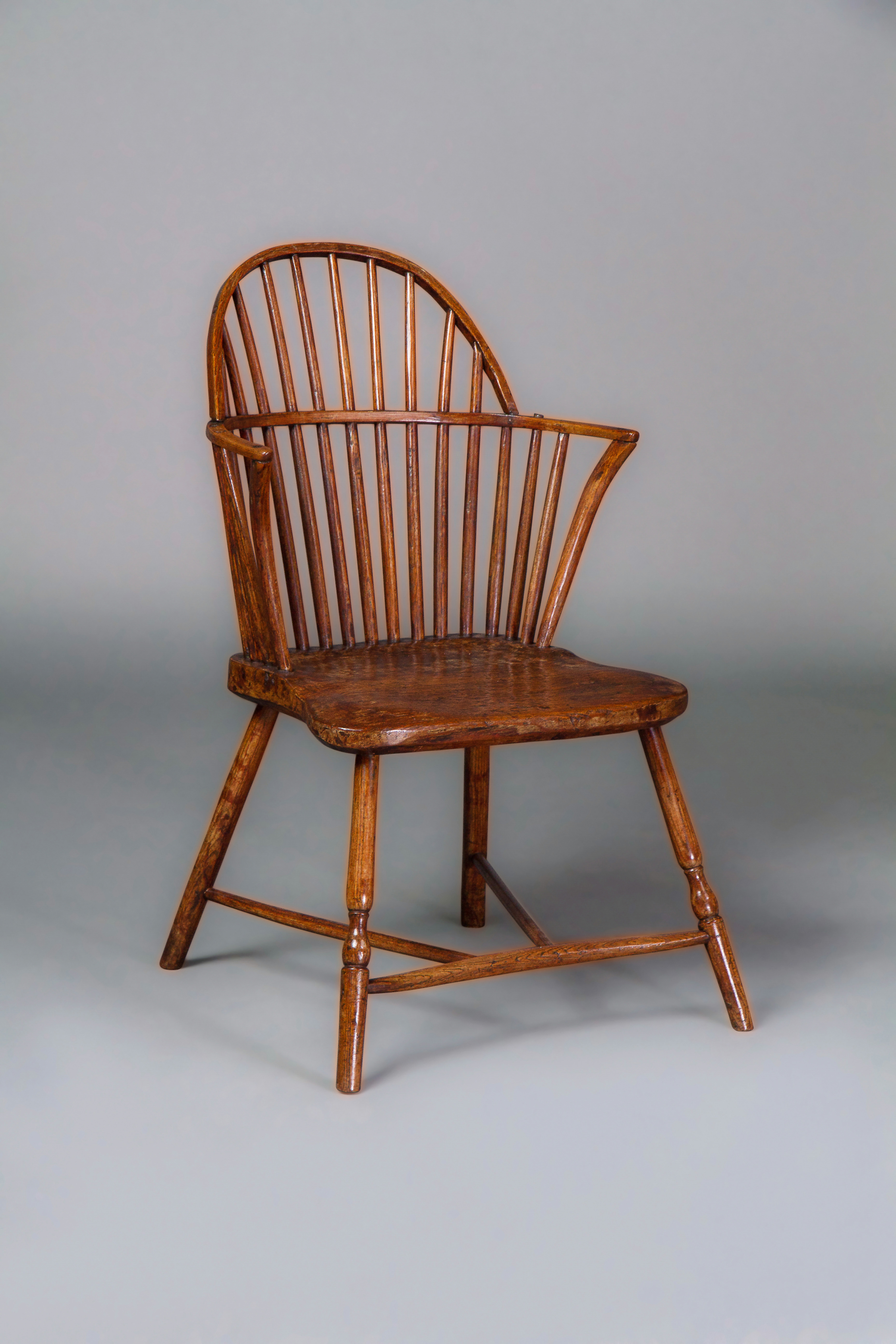
Gillows: A Late 18th Century Ash Windsor Chair Almost Certainly for the American Market
Inventory Number: : 160-118 Price: SOLD
22 1/2 ins wide
26 ins deep
35 ins high
seat height 16 ins
For more information please contact us
TELEPHONE. 917 414 1827
EMAIL. [email protected]
www.michaelpashbyantiques.com
© Michael Pashby Antiques.
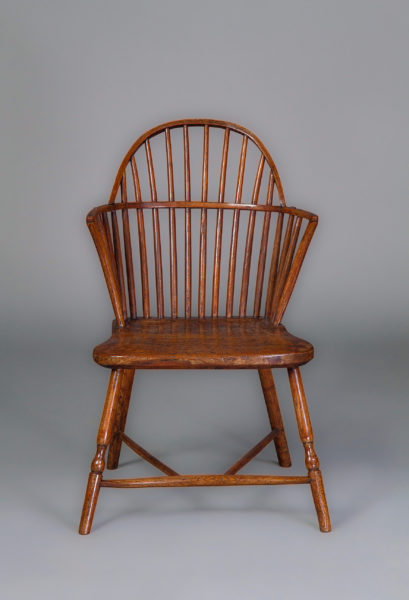 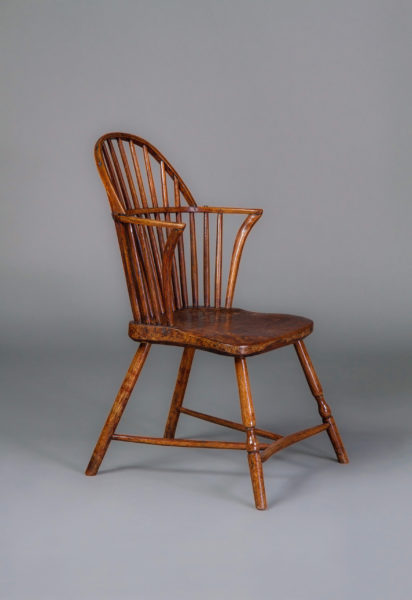  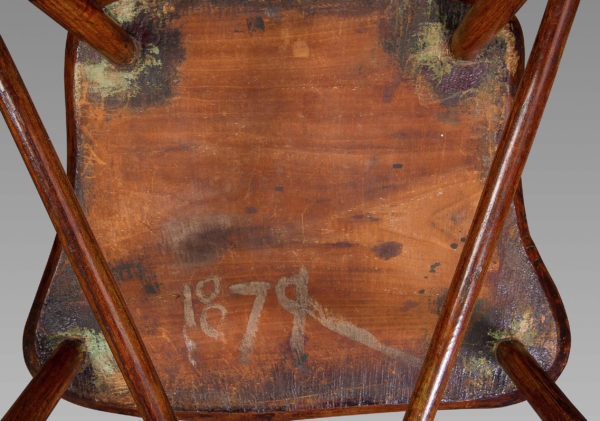 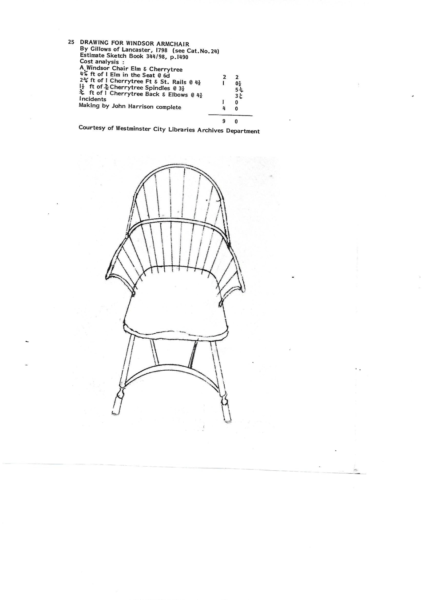
DESCRIPTIONWith a spindle back and shaped sycamore saddle seat on front outswept ring turned legs, joined by a crinoline curved stretcher with extra long joining rods to the rear legs.
The famous firm of Gillows of Lancaster and London produced Windsor chairs from as early as the mid-eighteenth until well into the nineteenth century, and this distinctive style is unique to the Gillows workshop. There are two drawings of identical chairs in the Gillows cost books for 1798 and 1806. Although primarily produced for the English market, Gillows had a thriving business providing this model to the American market following the War of Independence, shipping through Jamaica. Gillows sent unfinished chairs where they would be assembled, painted, if they were in inexpensive woods, and sold on to American agents and clients.
The present example was originally painted in a deep green paint over a lead white grain filler, and then further repainted green in 1879 (the underside of the seat is painted with this date suggesting the restoration) and there is the residue of a thick black varnish possibly added when it was fashionable in the late 19th century.
Very rarely seen on the market, and when found in the US sometimes incorrectly attributed to American makers, this is a historically important piece.
English, by Gillows, c. 1790
---
We are very pleased that Dr. Bernard Cotton, the celebrated author of The English Regional Chair has contributed an article regarding this specific chair, which is published here in its entirety.
GILLOWS WINDSOR CHAIR
During the 18th and 19th centuries, a unique form of Windsor chair was designed by the distinguished firm of Gillows of Lancaster, and made by a small group of makers who were employed as ‘out' workers. The evidence for this is found in two drawings made in the firm's Estimate Sketch Books, now in Westminster Library. The first is dated 1798 (cat.no. 24) 344/98.p.1490. This is included here, and includes a cost analysis which informs us that a local chair maker, John Harrison, made it for four shillings, and that the total cost, including Cherry, Elm, and nails (‘incidents') was nine shillings.
The second closely similar drawing was made in 1806 (344/99A.p1804) and Gillows' records show a self employed furniture maker and Innkeeper of the Punch Bowl Hotel, Lower Bentham, named James Wilcock, to have made this example, costing six shillings and ninepence halfpenny. This was itemised to be painted in green. James Wilcock senior and James junior were the major makers of Gillows Windsors during the 18th century.
Although these makers were initially the main suppliers of Windsors and other common chairs to Gillows, such was the demand for them that other makers were sought and in 1774 they employed a John Rumney of Dalton, Ulverston, and paid him five shillings each for twelve Windsors. Richard Gillow had written to Rumney to agree to take all he could make, and required him not to “pinch the bottoms in length or at the hips” to aid their comfort.
The use of the relatively expensive cherry wood shown in the original specification seems to have been dropped, since the chairs sold in England were subsequently painted green, and apart from practical reasons, the woods were therefore irrelevant. This is seen in Gillows search for suppliers of chair bottoms (eats) made from ‘Plane', a misnomer for Sycamore, and they found suppliers for the wood from as far away as Dumfries in Scotland, and more locally from Wray, a village near Hornby, close to Lancaster. Other seat timbers included Ash, Elm, and Beech, and invariably the legs, stretchers, and back parts were made in Ash, with Oak wedges fitted across the end grain of the spindles to secure them. In addition to green-painted chairs, however, a record in the Gillows Archive by Robert Gillow to an overseas merchant states that these chairs could be stained to look like Cherry, and thus required no painting.
Gillows developed a flourishing trade for their Windsors after the American War of Independence (1776-83) and their records show that they sent considerable numbers to the West Indies, including Jamaica; usually unassembled to maximise space, and probably not painted in order to avoid scuffing the surfaces.
The chair illustrated here for sale is a remarkably intact and original Gillows Windsor dating from the late 18th century, except that its original paint has largely been cleaned off. It conforms perfectly with Gillows' drawings, with a characteristic shallow curved front leg stretcher, long supports to the rear and elegantly turned front legs. The posture of the chair is striking, with splayed out legs giving maximum stability. The thin arm and top bows are pierced to allow the back spindles to pass through, and with Oak wedges inserted to hold them tightly in place. In contrast, the legs are fitted into the seat and residues of the animal glue used to hold them in place is visible. This was a feature which was evidently changed between makers, since amongst the rare survivors of these chairs are examples which have legs which are morticed and tenoned through the seat. Although the maker was clearly an expert turner, the front leg stretcher, arm supports and back spindles show facets on their surfaces indicating that cleft segments were shaped into a round with a draw knife. The entry point of the spindle tenons into the seat and back bows show that a chisel was used to shape them to an approximate round shape and then a small head rounder was probably used to create a precise tenon. The back and leg stretchers are made in Ash throughout (with small Oak wedges), and the seat is made of Sycamore.
Underneath the seat is the visual history of the chair's surface painting. Around each leg the residues of paint show that it was originally painted with verdigris based paint over a coat of white grain filler (probably white lead), patches of which can be seen particularly on the upper surface of the seat. The date 1879 is roughly painted in light green under the seat, suggesting that it may have been repainted, or that this was a later coat over an unpainted chair. Over this, it has a coat of black varnish made fashionable in the 19th century following the death of Prince Albert, Queen Victoria's husband, in the mid 19th century. The whole visible surface of the chair has been cleaned of these paint layers, with the exception of the seat which has retained clear paint areas.
For further information see S.Stuart, RFS Journal 2010. Pp 83-120
Dr B D Cotton. 2016
|

